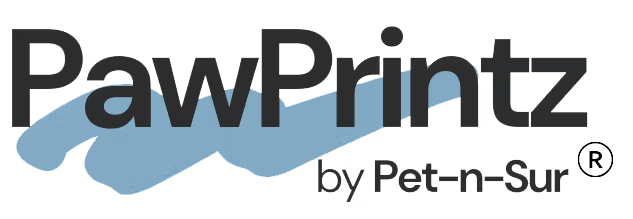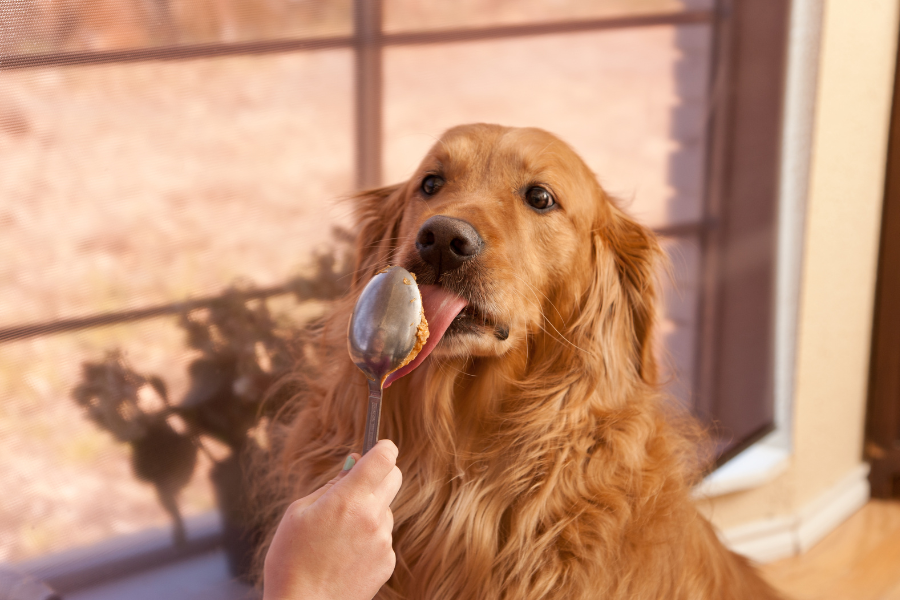What Exactly Is Xylitol?
Xylitol is a naturally occurring sugar alcohol found in small amounts in fruits and vegetables. Food manufacturers use it as a low-calorie sweetener in everything from sugar-free lollies to dental care products. It’s perfectly safe for humans — in fact, it’s even considered tooth-friendly — but for dogs, it’s highly toxic.
Even tiny amounts of xylitol can cause a rapid insulin release, leading to dangerously low blood sugar (hypoglycaemia) within 10–60 minutes. In larger doses, it can cause liver failure. This condition is medically referred to as canine xylitol toxicity or xylitol poisoning in dogs.
Peanut Butter: The Sweet Start of a Bitter Lesson
It’s no wonder so many owners associate xylitol with peanut butter. Over the past decade, a few overseas brands began adding xylitol as a sugar-free alternative in “healthy” nut butters. Fortunately, most New Zealand peanut butter brands are xylitol-free, but imported or specialty “keto” or “low-sugar” varieties may not be.
So, can dogs eat peanut butter? The short answer: yes, but only if it’s clearly labelled “xylitol-free peanut butter.” Always read the ingredients list carefully — if you see “xylitol,” “birch sugar,” or “sugar alcohol,” leave it on the shelf.
If you’re after a safe option, choose natural peanut butters that list only “peanuts” (and maybe a pinch of salt). It’s a simple precaution that can prevent a serious emergency.
For more advice on food safety during special occasions, check out our post Egg-Citing Easter Treats, which covers safe and unsafe holiday goodies for dogs.
10 Surprising Items That May Contain Xylitol
While peanut butter gets the headlines, xylitol appears in many household items you’d never suspect. Here are 10 common products with xylitol that every dog owner should be aware of:
- Sugar-free chewing gum and mints — The most frequent cause of xylitol ingestion in dogs. Just one or two pieces can be toxic.
- Toothpaste and mouthwash — Many “natural” or “kids’” dental products use xylitol as a sweetener. Always store these well out of reach.
- Sugar-free lollies or cough drops — Especially those labelled “diabetic-friendly” or “no added sugar.”
- Baked goods and cake mixes — Some “low-carb” or “keto” recipes use xylitol in place of sugar.
- Protein powders and energy bars — Fitness snacks often hide xylitol under alternative names.
- Nut butters and spreads — As mentioned, check all “natural,” “lite,” or imported options.
- Medications and supplements — Some chewable vitamins, especially for children, are sweetened with xylitol.
- Sugar-free syrups and sauces — Think pancake syrup, BBQ sauce, or flavoured coffee syrups.
- Ice cream and frozen yoghurt — The “sugar-free” varieties can be dangerous if shared with your dog.
- Cosmetics and lip balm — Surprising but true — dogs often lick these from hands or faces.
Keeping this list in mind helps you scan your pantry and bathroom for foods that have xylitol before your dog does.
How Xylitol Affects Dogs
When a dog consumes xylitol, its pancreas mistakes it for real sugar and releases a surge of insulin. This causes a sudden drop in blood sugar levels, which can lead to seizures, collapse, or even death if untreated.
The signs of xylitol poisoning can appear within minutes and may include:
- Weakness or lethargy
- Vomiting
- Trembling or shaking
- Loss of coordination
- Seizures
- Collapse
In severe cases, liver damage may develop within 24–48 hours, even if the dog initially seems fine.
If you ever find yourself thinking, “My dog ate xylitol — what now?” the answer is simple: treat it as a medical emergency.
What To Do If Your Dog Eats Xylitol
- Act immediately. Don’t wait for symptoms. Even a small amount can be life-threatening.
- Call your vet or an after-hours emergency clinic right away. If possible, tell them the product name and how much was eaten.
- Do not induce vomiting unless instructed by a vet — some products can cause more harm coming back up.
- Keep your dog calm and warm while travelling to the clinic.
In New Zealand, most veterinary clinics have experience handling xylitol ingestion in dogs, but speed is crucial. Treatment often involves IV fluids, glucose monitoring, and liver support.
Pet-n-Sur customers can also access financial peace of mind with Dog Insurance that includes emergency and accident coverage for dogs — giving you one less thing to worry about when every minute counts.
How To Prevent Xylitol Poisoning in Dogs
- Read labels carefully. Anything marked “sugar-free,” “no sugar added,” “keto,” or “diabetic-friendly” deserves a closer look.
- Store human products securely. Keep handbags, gym bags, and groceries out of reach.
- Educate your household. Make sure everyone — especially kids — knows not to share human treats.
- Switch to xylitol-free alternatives. Choose xylitol-free peanut butter and other dog-safe snacks.
- Schedule regular vet checks. Preventative care can catch subtle health issues early; learn more in How Preventative Care for Pets Can Save You Money.
Prevention is far simpler (and far cheaper) than emergency care.
Why Xylitol Is So Dangerous to Dogs — But Not Humans
The difference lies in metabolism. Humans absorb xylitol slowly, and it doesn’t affect insulin levels significantly. Dogs, however, process it rapidly — their bodies interpret it as real sugar and over-react. The more insulin released, the more blood sugar plummets.
It’s a powerful reminder that “safe for humans” doesn’t mean “safe for pets.” Other common examples include grapes, onions, and chocolate — all harmless to us but toxic to dogs.
You can read more tips on avoiding everyday household hazards in Five Tips for Keeping Your Dog Safe.
Local NZ Insights: Where Xylitol Hides in Kiwi Homes
In New Zealand, xylitol has quietly made its way into supermarket shelves and online “health food” stores. While classic brands like Pics or Fix & Fogg remain xylitol-free, imported health products or boutique brands sometimes use it for its “natural” sweetness.
Other Kiwi-specific items where we’ve spotted xylitol include:
- “Sugar-free” lozenges sold in pharmacies
- Imported toothpaste from natural health shops
- Gym protein balls or low-carb snack bars
- Homemade keto recipes shared on social media
Before you share any treat with your dog — even something that seems harmless — check the label or confirm it’s xylitol-free.
Emergency Preparedness: Plan Ahead
While the goal is to prevent accidents, it’s smart to have a plan just in case.
- Know your nearest 24-hour vet clinic. Save their number in your phone.
- Keep packaging from suspect products. It helps your vet assess dosage and risk.
- Have an emergency fund or pet insurance. Unexpected treatments can be costly, and having comprehensive dog insurance helps ensure your dog gets immediate care.
Xylitol and Dogs: The Key Takeaway
Peanut butter might be the familiar face of this topic, but xylitol hides in far more places than most owners realise. The best protection is awareness, preparation, and prevention.
By understanding xylitol poisoning in dogs and staying alert to foods that have xylitol, you can keep your pet safe without panic. If an accident does happen, stay calm, act fast, and get veterinary help immediately.
Protect Your Dog with Confidence
Emergencies happen — but with the right cover, they don’t have to become crises. Explore Dog Insurance from Pet-n-Sur for insurance for breed-related conditions and respiratory issues, as well as emergency and accident coverage for dogs.
Your dog depends on you — and you can depend on us.



